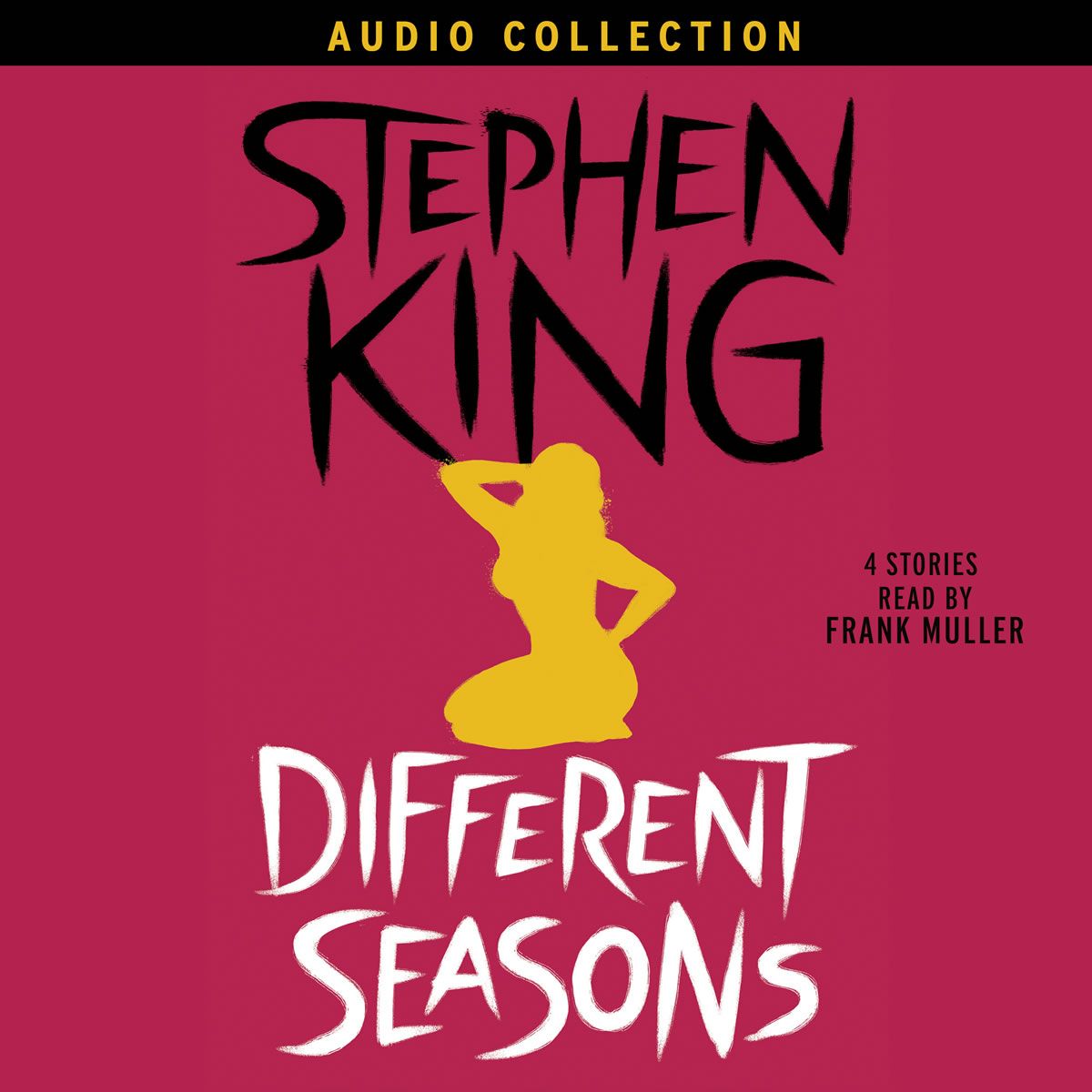
Different Seasons by Stephen King
I recently watched The Shawshank Redemption and Stand by Me with my wife and children. My wife and I had seen the movies when they first came out but our children had not seen either movie. The kids loved both movies and I was very pleased to see that the films held up beautifully with time. The movies are universally loved. If you don't believe me, then go look on Rotten Tomatoes (here and here).
I got to thinking (uh oh). The source material had to be great to make such fantastic movies. I read quite a bit of Stephen King in my teen years (Cujo, Carrie, Night Shift), but I hadn't read Different Seasons, the book of four novellas—two of which were the basis for these movies. My curiosity was piqued. Was it time for a personal reconsideration of Stephen King? I've recently discovered that there are a lot of critics doing this, particularly The Guardian's 'Rereading Stephen King' column is giving it a go. I read their review of Different Seasons with great interest, although I disagreed with most of the James Smythe's assessments. But there is one thing he and I agree on: there is some literary greatness within the cover of Different Seasons. Unfortunately, there are some not so great moments, too.
I decided to buy the book through Audible. It is narrated by Frank Muller. I'll review his narration separately.
So, let's dive in!
The novellas "Rita Hayworth and the Shawshank Redemption" and "The Body" are both affecting literary depictions of the power of friendship, something I love to see in fiction. If you love the movies The Shawshank Redemption and Stand by Me—based on these novellas—then you will also love these stories. The movies are faithful to the novellas with only slight changes that streamline their cinematic versions. The narrators tell their stories with an affecting lilt, remembering the friendships that bound them, even through harrowing events. King shows great descriptive flair in both stories and the dialogue is snappy and true to life. Red (the narrator of Shawshank) and Gordie (the narrator of The Body) are both likeable and effective storytellers who reveal the goodness beneath the criminals and punks of both stories.
"Rita Hayworth and the Shawshank Redemption" is perfect storytelling. Perfect!
"The Body" is great, too, with one exception. Two short stories are included—in full—within the novella that are examples of what Gordie publishes as an adult when he becomes a professional writer. Unfortunately, they do not add anything to the story of the four, young friends; and the "pie eating contest" could have more effectively been told by young Gordie as a campfire tale within the main narrative.
The novellas "The Apt Pupil" and "The Breathing Method" were less satisfying and, quite frankly, not worthy of inclusion with the other two novellas. In "The Apt Pupil," neither main characters have any redeeming qualities whatsoever and reading this story was the equivalent of watching two rats devouring each other on a sinking ship. "The Breathing Method" is a Tales from the Crypt-inspired story told in long-form. This novella uses the "story within a story" structure, which can be fun if used effectively. Ultimately, this structure is used to only reveal a gruesome death, then the novella abruptly ends. Not much is revealed about either narrator and the "story within a story" structure is wasted for a salacious parlor trick.
"The Apt Pupil" is garbage. Complete garbage!
"The Breathing Method" is pointless, although a pared down version might make an effective script for a 1950s horror comic piece, if put in the hands of a great illustrator.
I enjoyed the Afterword of the book. In it, Stephen King tells the origins of each of the novellas and how they ended up in this compilation. In short, novellas were a hard sell to a publisher during that time in the 1970s and 80s, too short to sell as standalone works of fiction in bookstores and too long to sell to a magazine or literary journal. King's self-deprecating narration is in full-swing. He's funny, insightful, and self-effacing.
Finally, the narrator for this audiobook—Frank Muller—is excellent. His deep, baritone voice was pleasant to listen to and he barreled through the stories with conviction and vigor. His narration in "Rita Hayworth and the Shawshank Redemption" was comparable to that of Morgan Freeman and he effectively altered his tone to depict each of the boys in "The Body." His narration is top-notch. My only complaint is the sound quality of this Audible edition is somewhat tinny and sometimes Muller sounds like he is being recorded using a tin can with string. Nevertheless, he is a great narrator.
Verdict: I recommend this book for "Rita Hayworth and the Shawshank Redemption" and "The Body" because they are both great literary works of fiction. You can skip "The Apt Pupil" and "The Breathing Method." The Afterword is a fun addition and Frank Muller is a fantastic narrator.
Buy the paperback on Bookshop: https://bookshop.org/a/152/9781501143489
Listen to the audiobook on Libro.FM: http://libro.fm/referral?isbn=9781508216797&rf_code=lfm85040

